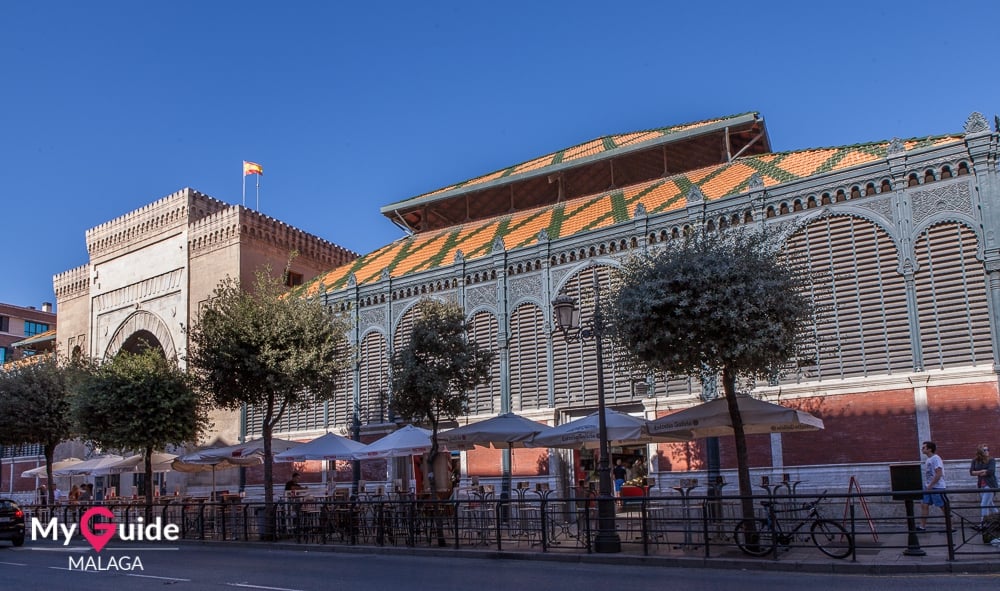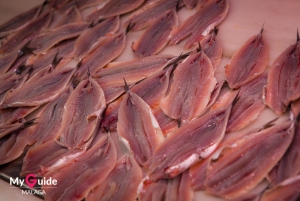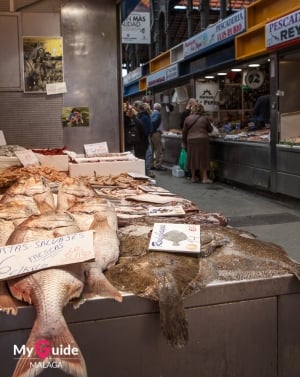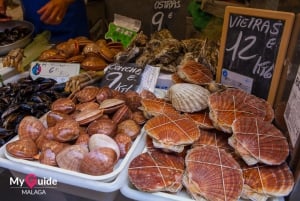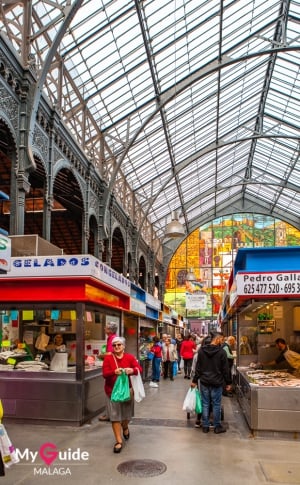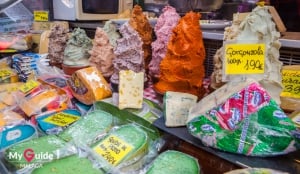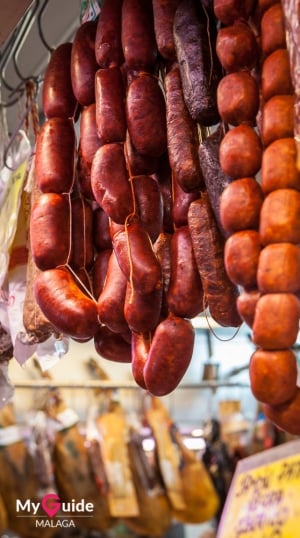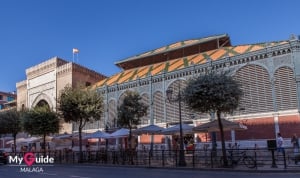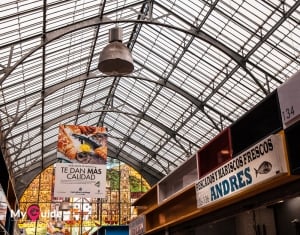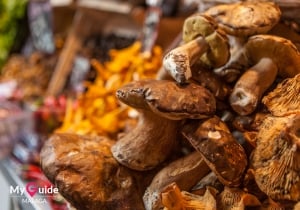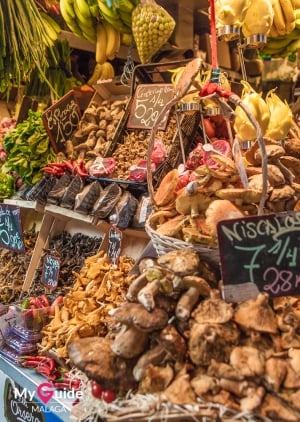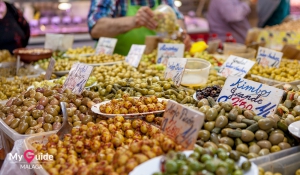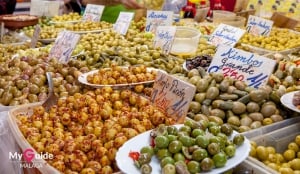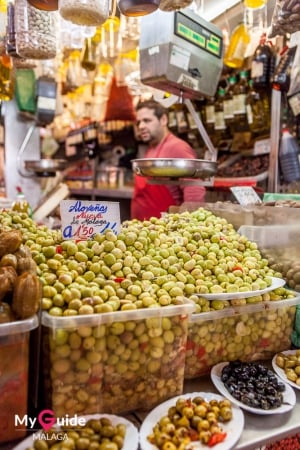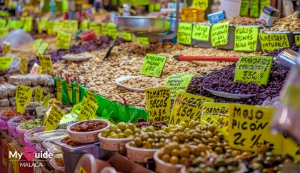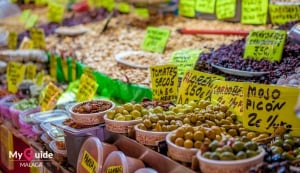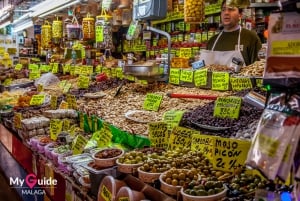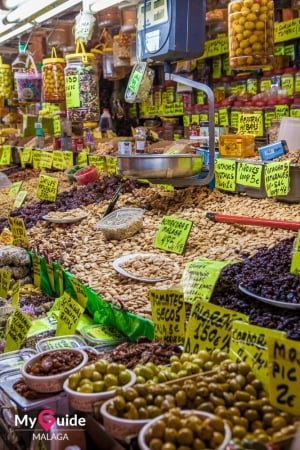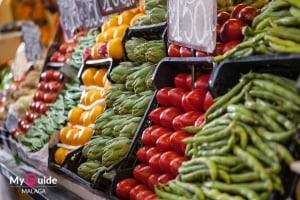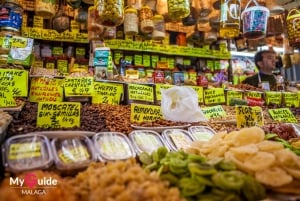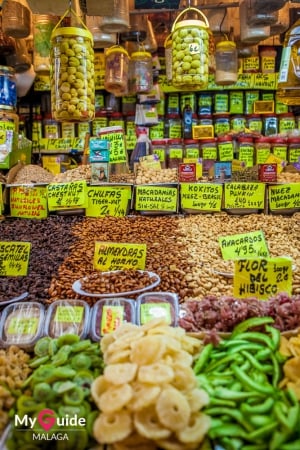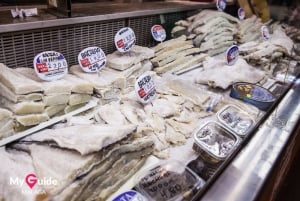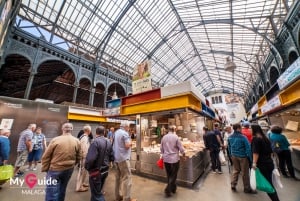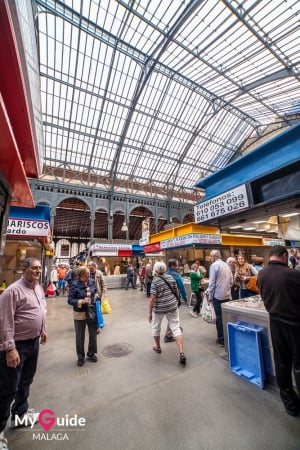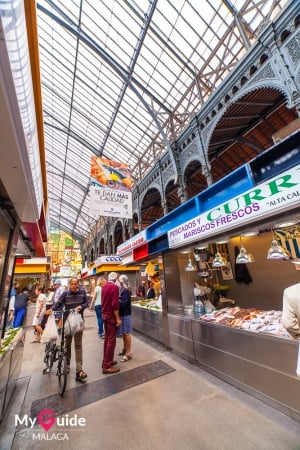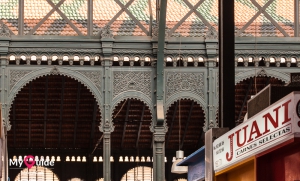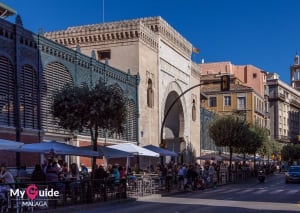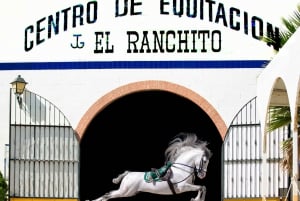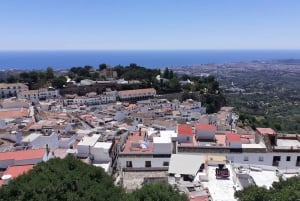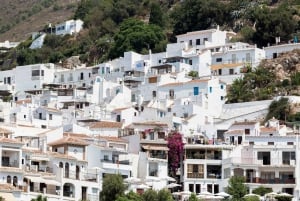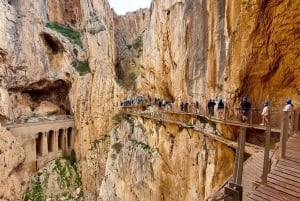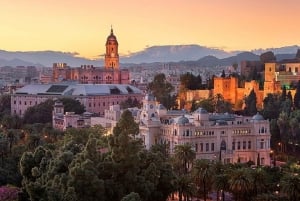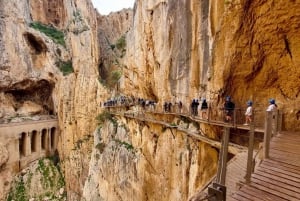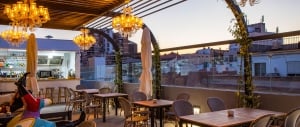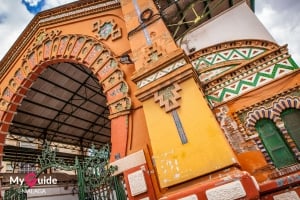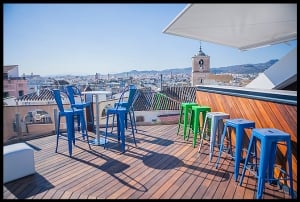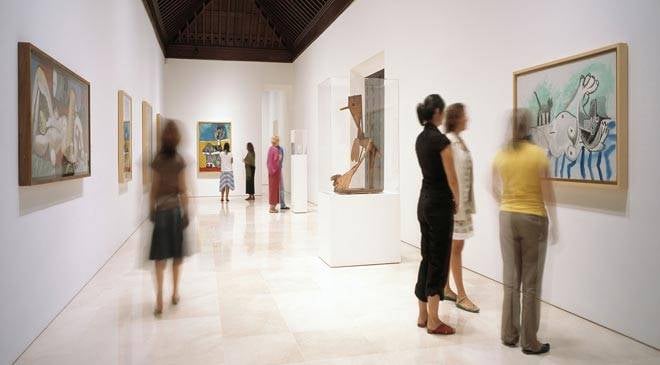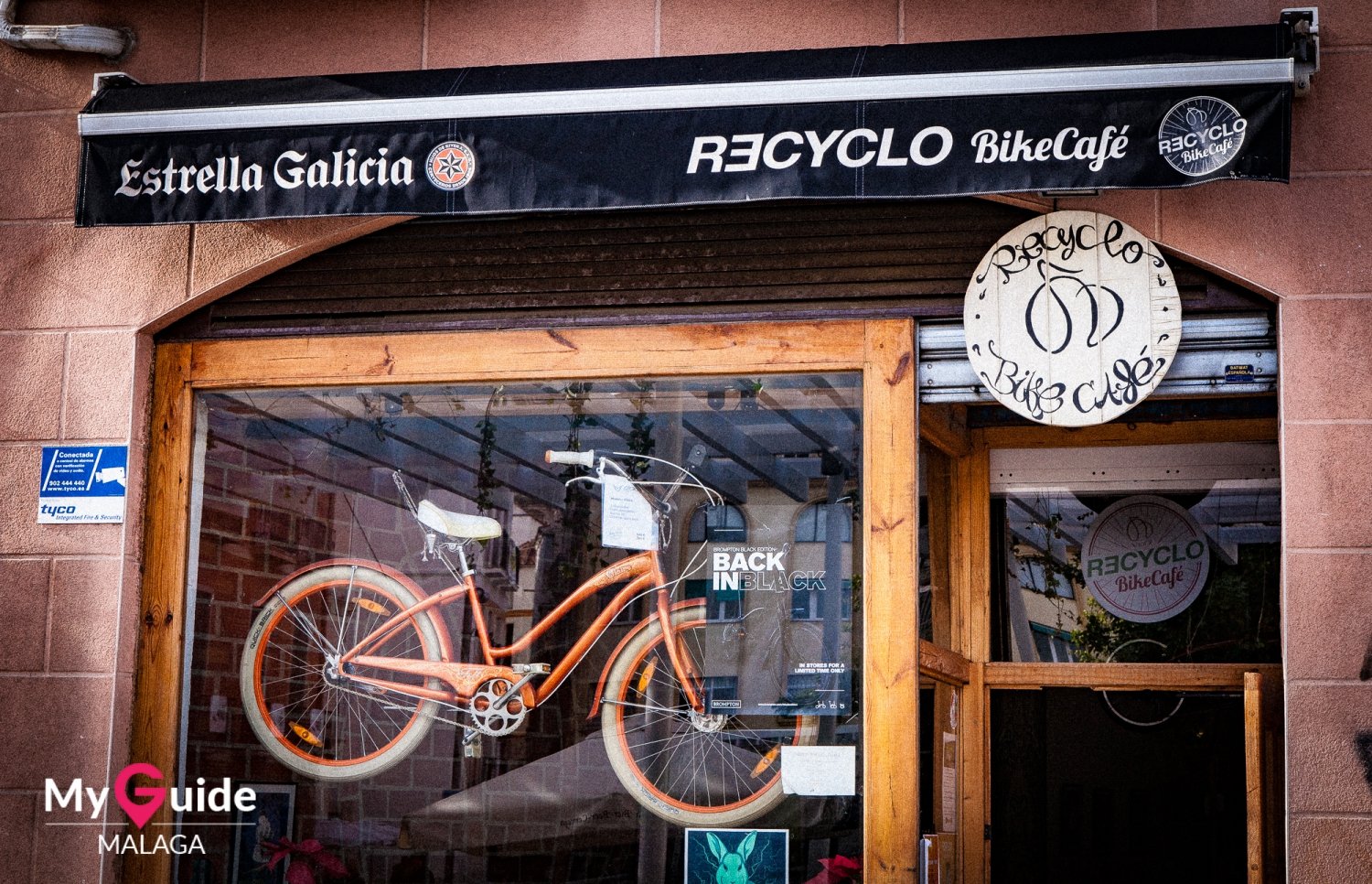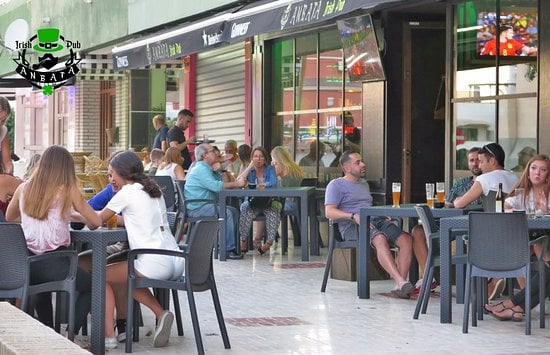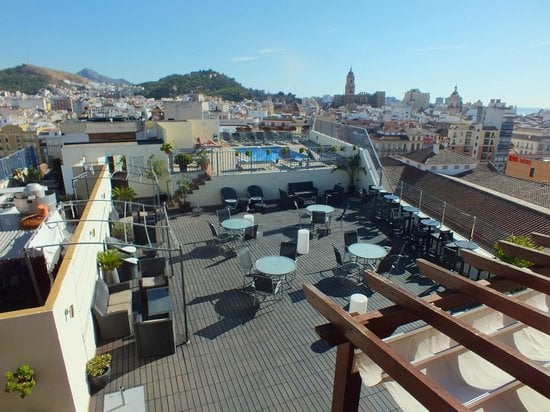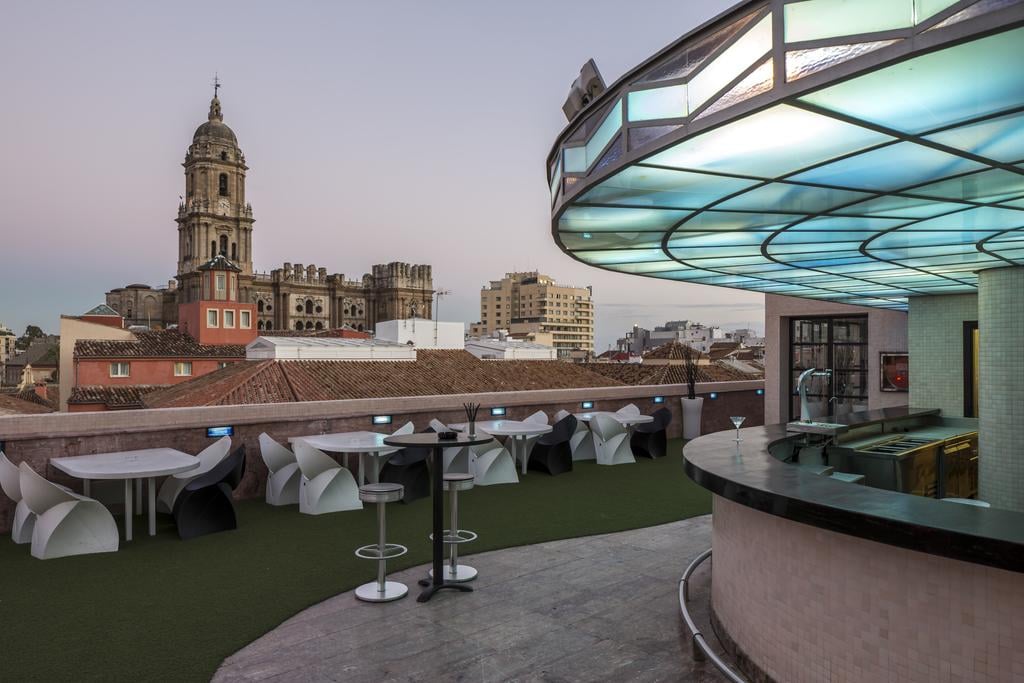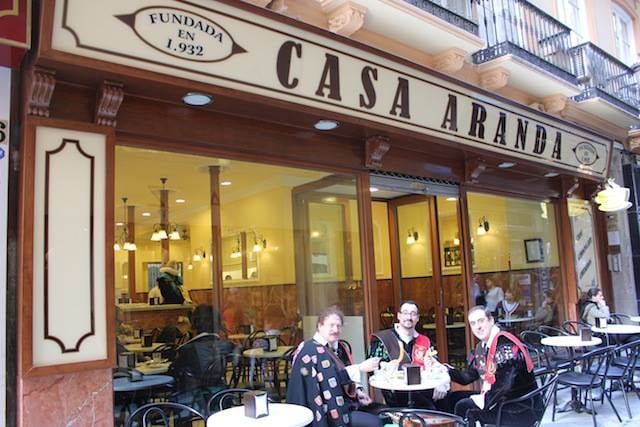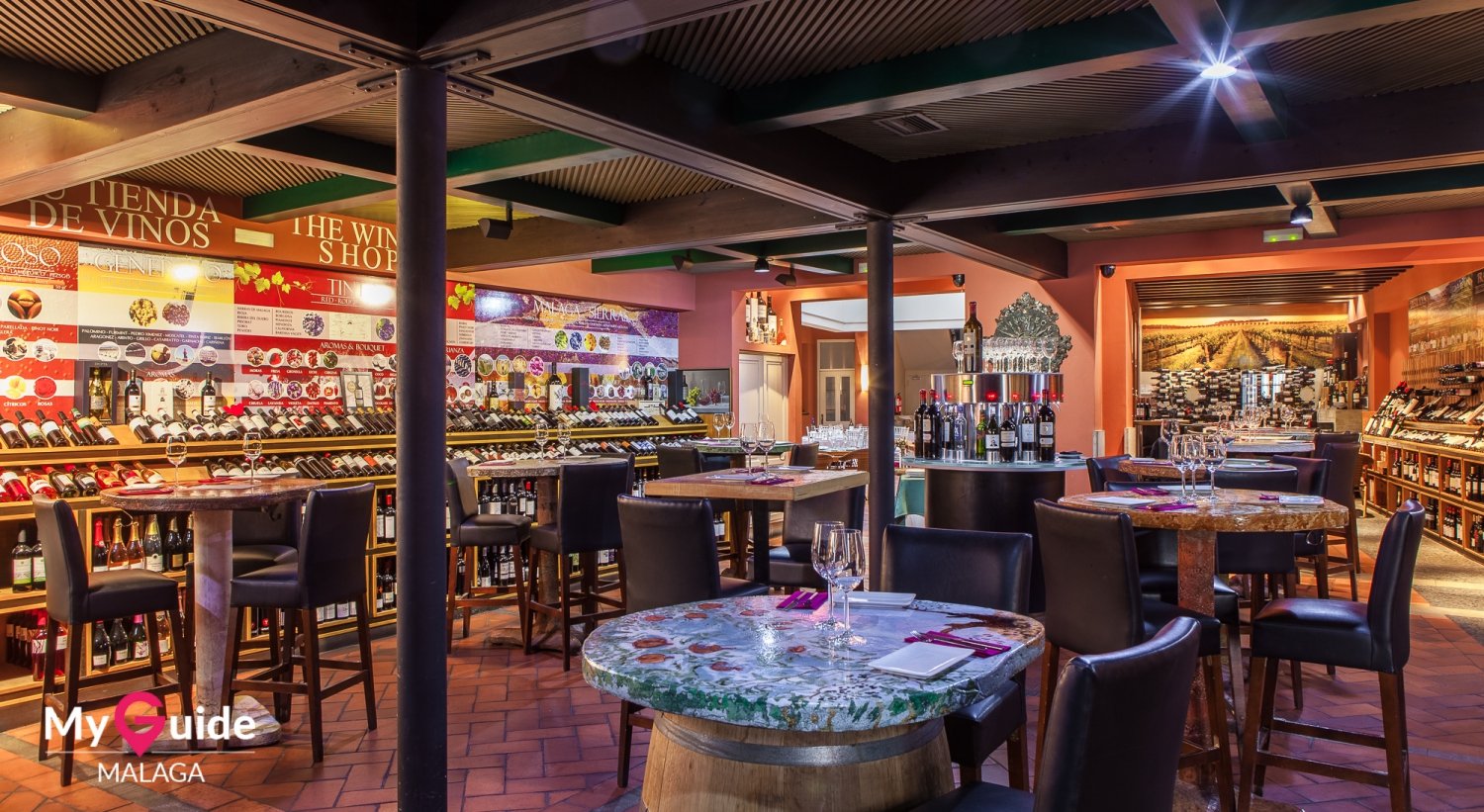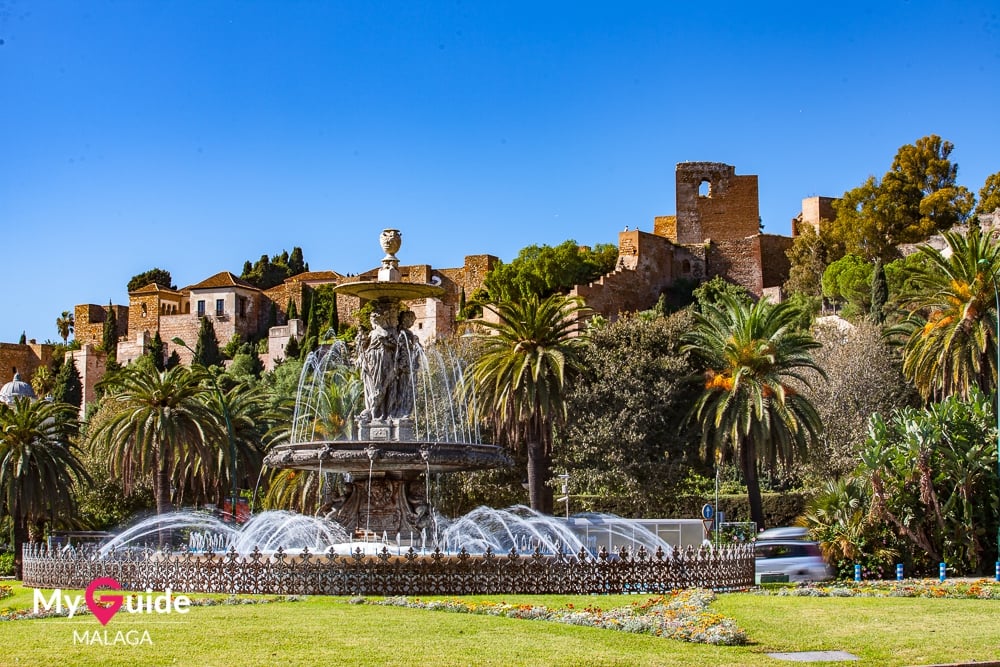Atarazanas - The Super Market
A wonderland of nuts, sausage and seafood, sweet things and salty things, a foodie explosion
Book Top Experiences and Tours in Malaga:
If youʻre booking your trip to Malaga last minute, we have you covered. Below are some of the top tours and experiences!- Tour to Gibralfaro
- Caminito del Rey private tour from Costa del Sol
- Málaga: Cathedral, Alcazaba, Roman Theater Walking Tour
- Torremolinos: Horse Show with Dinner, Drinks, & Flamenco
- Spain: Europe eSim Mobile Data Plan
The market is open daily from 8am until 2pm, except on Sundays. It is located centrally, behind the tall old buildings that line the central Alameda. If, foolishly, you are going by car to the old town, you can usually park in the Camas underground parking, a mere block away. Far better to be car-free in the city, the public transport is cheap and plentiful.
The market itself is a recently refurbished building whose man facade gives a clue to its ancient origins. It is divided into three main areas, meat, seafood and produce. In more recent years however the market has seen the appearance of gastro tapas and drinks in certain areas of the hall, to feed the demand from tourists, and to put some of the amazing produce into service. So one of the most rewarding aspects, apart from strolling the aisles admiring the food, is to be able to sample delicious seafood tapas, plates of cold meats and other preserves, classic dishes from local veg such as artichokes, asparagus, olives in abundance, all offered accompanied by a range of sweet wines from the Malaga area or dry sherries from down the road in Cadiz province. The produce of Andalucia is typically Mediterranean, but the Moorish roots of the culture are also visible in the large amount of dried fruits and nuts, the sweet spices and jellies, the pomegranates and quinces. Much of the agriculture of the region was developed under the Moorish dynasties, but further back the influence of the Romans may explain why the Boqueron, a form of anchovy, is the emblem of the Malagueño. It is their nickname. The once abundant fish was harvested by the Romans and turned into a fermented fish pulp called Garum, which became a sought after condiment and food staple all over the empire. They would also have harvested the sweet grapes and olives, and Málaga was famous for its wine even in Roman times. Alas, that fame was dealt a body blow by the phylloxera pest that laid waste to the region in the 1820's. Wine production is still only a fraction of what it once was.
Today, the most fascinating stalls are those that sell the various preserved and dried preparations of nuts, fruit, vegetables, meat and fish. In a hot climate they were adept at preserving food, and with copious sea salt, salting food was a common method. To this day you can buy various forms of dried salted fish, such as 'Mohama', a fibrous chewy tuna preparation which packs a punch of flavour that can only be described as heavyweight. If you are traveling you won't need to be buying fresh food you can't cook, but there are so many places where you can stock up on all sorts of chorizo, black pudding and salami. You can buy bags of delicious nibbles of nuts and dates, fat sweet Moscatel sultanas, jellies and candied fruits, and so many other things to snack on or for presents. Honey, wines, olive oils, all local and typical of the traditional production methods. You can sample many different tapas treats of seafood, fish, and meat. Just as well as you won't want to be carrying around prawns and shellfish on your travels!
The history of the building itself is long and dramatic. One must bear in mind that when it was constructed on this spot as this was the point where the sea arrived in the already existing port. The Almohad dynasty, at the end of the 12th century, saw the construction of a shipbuilder's dry dock on the Roman model. It was expanded in the Nasiri period so that by the re-conquest in 1485 it was a considerable fortification and shipyard covering 6000 square metres. It served military use for some time, as an arsenal, a hospital and barracks but by the early 19th century it was largely in ruins. With the sea now a few hundred metres away, it represented a cumbersome hindrance in the middle of the new business district. In 1840, the large fortified corner towers were demolished. In 1868 the extensive walls were demolished and the area prepared for conversion into the city's first covered market space. Only the main archway now remained of the original, which to this day is the principal entrance. It was initially called the Mercado Alfonso XII, after the king, but has always been known as the Atarazanas, a name that derives from the original Moorish shipyard that occupied the site for nearly 700 years.
The 19th Century cast iron structure underwent extensive rehabilitation in 2008, with the improvement of the stalls and facilities, renovation of the skylights, roof and wall panels which now feature glass murals on Malagueño history. The Atarazanas still ably serves the people of Málaga. Many shops have gathered in the barrio around it to supplement the produce offered. Fortunately tourism has not changed the character of the market, but has given it a new lease of life, with former fruit sellers converting to selling gourmet tapas and local wines. That balance between local need and function and the needs of visitors has created a fascinating ambiance, a feast for the senses, and it is justifiably number one of many people's list for visiting Malaga.
Whether you stroll around yourself, or take a gastro guide with you, be sure not to miss it.
Open Monday to Saturday 0800 to 1430hrs approximately



